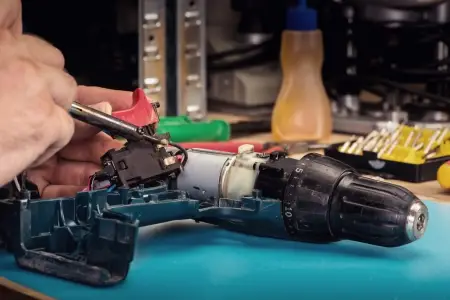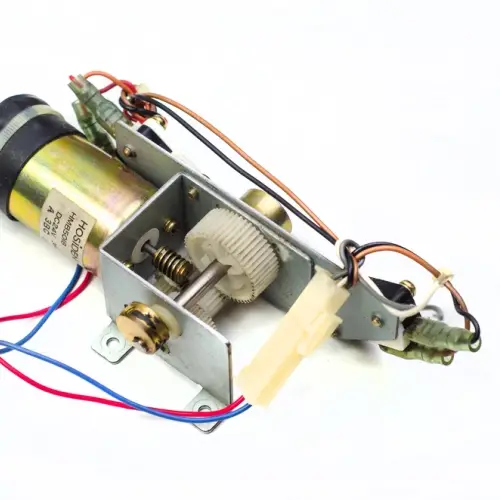
Universal motors are a type of electric motor that can operate on both alternating current (AC) and direct current (DC). This versatility makes them popular in applications where high starting torque and adjustable speed are required.
There are several classifications of universal motors based on different criteria. The most important types are described here.
Universal series motors
In this type of motor, the stator winding and the rotor winding are connected in series. This configuration provides high starting torque and allows variable speed depending on the load.
Advantages
Series universal motors offer high starting torque, making them ideal for applications requiring strong initial thrust, such as power tools and appliances. Variable speed capability is another significant advantage, as speed decreases with increasing load, allowing for efficient control.
Furthermore, its construction is relatively simple and inexpensive, which contributes to its popularity in various consumer applications.
Disadvantages
However, these motors have some disadvantages. The commutator and brushes are in constant contact, which causes wear and requires regular maintenance. They also tend to be noisy, which can be a disadvantage in applications where silence is crucial.
Efficiency is also lower compared to other types of electric motors due to energy losses in the commutator.
Applications
These motors are widely used in portable power tools such as drills, saws and grinders due to their high starting torque and variable speed.
These features also make them ideal for appliances that require power and flexibility, such as vacuum cleaners and mixers. Their ability to operate on both alternating and direct current makes them versatile and suitable for a variety of environments.
Additionally, their simple and economical construction makes them a cost-effective option for consumer products that require performance and durability.
Universal compound motors
Compound motors combine the characteristics of series motors and shunt motors. They have two windings in the stator: one in series and one in parallel with the rotor.
Advantages
Compound motors combine the characteristics of series and shunt motors, providing a more constant speed under different loads, which is beneficial for applications requiring speed stability. They also maintain good starting torque due to the series winding.
Disadvantages
On the other hand, compound engines are more complex in design and construction, which can increase cost and difficulty of maintenance. The added complexity can also mean there are more potential points of failure.
Although they offer advantages in terms of performance, their higher cost and maintenance can be a drawback in applications where simplicity and low cost are required.
Applications
They are used in industrial and commercial applications where a combination of good starting torque and speed stability is required. They are ideal for light industrial machinery and printing equipment that require constant speed under different loads.
They are also used in some electric transportation applications, such as small electric vehicles, due to their ability to maintain stable performance. The increased complexity and cost of these motors are justified in situations where performance accuracy and reliability are crucial.
Permanent magnet universal motors
These motors use permanent magnets for the stator field instead of field windings.
Advantages
 Permanent magnet motors are simple and economical as they eliminate the need for field windings, reducing complexity and production costs. They are also generally more efficient due to the absence of losses in the stator winding.
Permanent magnet motors are simple and economical as they eliminate the need for field windings, reducing complexity and production costs. They are also generally more efficient due to the absence of losses in the stator winding.
Their compact design and lack of magnetic field maintenance make them ideal for applications in small, low-cost devices.
Disadvantages
However, they have some limitations, such as a generally lower starting torque compared to series motors, making them less suitable for applications requiring high initial thrust. In addition, permanent magnets can be less effective in large motors, limiting their use in large industrial applications.
The stability of magnets can also be affected by high temperatures, reducing their efficiency and durability.
Applications
Permanent magnet motors are common in small, low-cost devices where simplicity and efficiency are a priority. They are found in electric toys, small appliances such as portable fans, and audio equipment.
Their compact and efficient design also makes them suitable for applications in portable technology and light tools.
Furthermore, their lower maintenance requirements and reduced costs make them an ideal choice for products requiring a high cost-benefit ratio, with occasional or continuous use at low load.